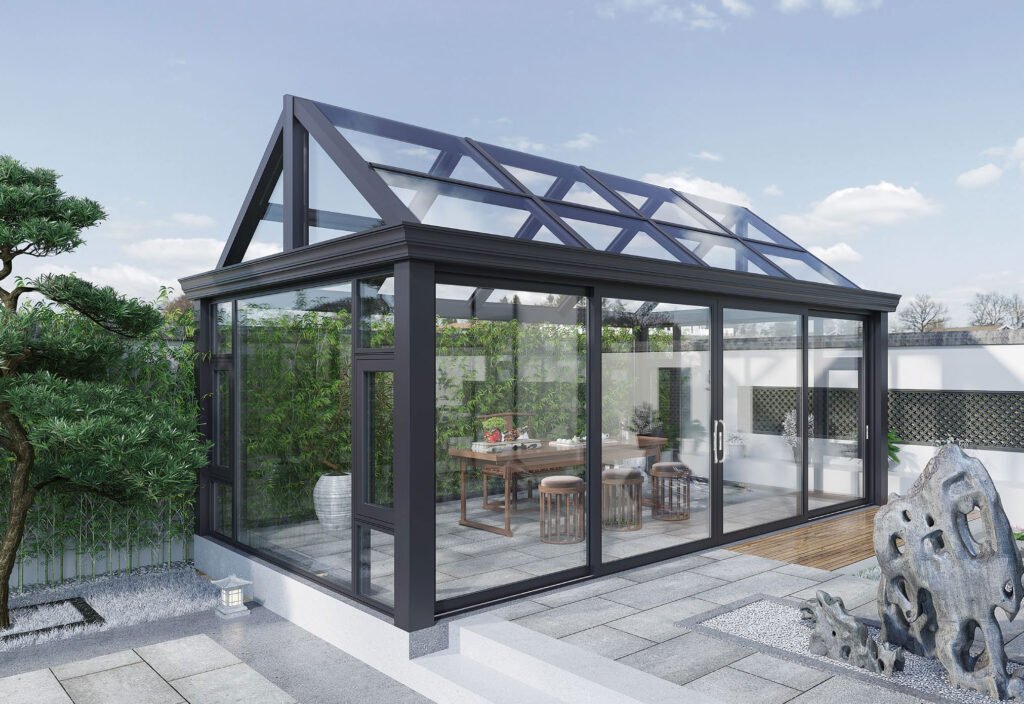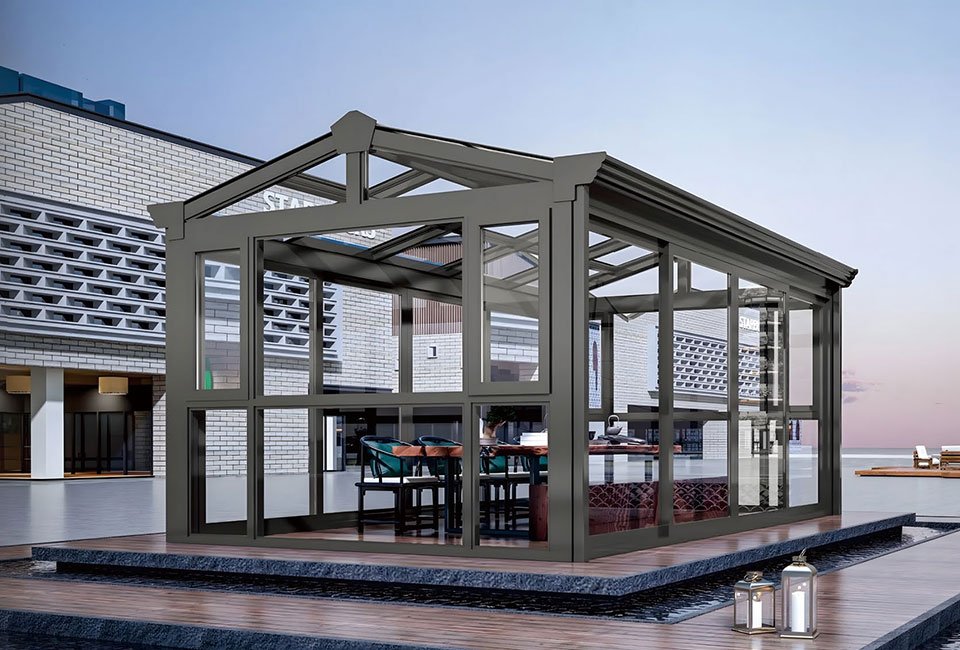Sunrooms are wonderful spaces to enjoy the outdoors from the comfort of your home, but they can also be prone to temperature fluctuations. During the winter, they may become too cold, and in the summer, they can heat up excessively. To make your sunroom usable all year round, effective insulation is essential. Proper insulation helps maintain a comfortable temperature, reduces energy bills, and ensures the space can be enjoyed no matter the season. Here’s a comprehensive guide on how to insulate your sunroom for all-season use.

1. Start with the Right Windows
Choose Energy-Efficient Glass
The windows in your sunroom play a critical role in regulating the temperature inside. Opting for energy-efficient glass can make a significant difference. Double-glazed or Low-E glass windows have a layer of air trapped between two panes of glass, offering better insulation compared to single-pane windows. This reduces heat transfer, keeping your sunroom cooler in the summer and warmer in the winter.
Add Window Films or Tinting
If replacing windows isn’t an option, you can still enhance their insulating properties by applying window films or tinting. These films help reduce heat loss during winter and block UV rays in the summer, improving the overall temperature regulation in your sunroom. UV-blocking films also protect furniture and flooring from sun damage.
2. Install Insulated Doors
Your sunroom’s door can be a major source of heat loss if it’s not properly insulated. Insulated doors with double glazing can significantly improve energy efficiency. Choose doors that are designed to minimize drafts and heat transfer. If replacing the door is not feasible, you can insulate the existing door by adding weatherstripping around the edges to create a tighter seal and prevent air leaks.
3. Use Insulating Wall Materials
Insulated Panels
If your sunroom has walls made from materials that aren’t very insulating, consider upgrading to insulated panels or adding layers of insulation to the existing walls. You can use rigid foam board or spray foam insulation to fill any gaps in the walls. These materials are highly effective at preventing heat transfer and reducing air leakage, making your sunroom more energy-efficient.
Drywall and Insulation
Another option is to install drywall with an insulating layer behind it. You can use fiberglass batt insulation or foam board insulation. These materials can be placed between the studs in the wall to improve the overall thermal resistance of the sunroom.
Wood Paneling or Cladding
For a more natural look, you can opt for wood paneling or cladding for the walls. Wood is a good natural insulator and can help keep the temperature regulated. Just ensure that the wood is properly treated to resist moisture and pests.
4. Seal Gaps and Leaks
Even the best insulation won’t be effective if there are gaps or cracks in your sunroom. Air leaks around windows, doors, and where the walls meet the floor or ceiling can contribute to significant heat loss. Take the time to:
- Caulk around window frames and door frames to seal any gaps.
- Install weatherstripping on the edges of doors and windows to create an airtight seal.
- Check for gaps in the walls, especially in the corners, and fill them with spray foam or caulk.
Properly sealing these gaps can reduce drafts and improve the effectiveness of your insulation.
5. Consider Adding a Ceiling Insulation
The ceiling of your sunroom is another area where heat can escape, especially in homes with high or vaulted ceilings. Adding insulation to the ceiling can help maintain a comfortable temperature year-round. Fiberglass batt insulation or spray foam are effective options that can be applied directly to the ceiling or roof.
For a less invasive option, you can also install reflective foil insulation on the roof of the sunroom. This type of insulation helps reflect heat back into the space during the winter and deflects heat away in the summer, keeping the temperature balanced.
6. Install Radiant Floor Heating
One of the most effective ways to maintain warmth in your sunroom during the colder months is by installing radiant floor heating. This system can be installed under the floor, and it heats the space from the ground up, creating a comfortable, even temperature throughout the room. Radiant floor heating works well in sunrooms, as it ensures the space stays warm without the need for bulky heaters.
Additionally, insulating the floor can help to keep your sunroom warm. Adding a layer of foam board insulation beneath the flooring will reduce heat loss through the ground.
7. Use Curtains or Blinds
In addition to structural insulation, you can also use insulated curtains or blinds to help regulate the temperature inside your sunroom. These window treatments can help block out the cold in winter and keep the room cooler in the summer by blocking excess sunlight.
Look for thermal curtains that have an insulated backing to improve energy efficiency. Cellular or honeycomb blinds are also an excellent option, as they create air pockets that trap heat and help keep your sunroom comfortable throughout the year.
8. Add a Roof Insulation
The roof of your sunroom is a critical part of temperature regulation. Without proper insulation, your sunroom could be prone to extreme temperatures. Consider using insulated roofing panels or adding insulation under the roofing material. Polycarbonate roofing panels with multi-wall construction are an excellent option for sunrooms, as they provide natural light while offering superior thermal insulation.
Reflective roof coatings are another option that can reduce heat buildup in the summer while helping to keep the warmth inside during winter.
9. Create a Barrier Between the Sunroom and Rest of the House
If your sunroom is attached to the house and has a door leading into the rest of the home, installing a door draft stopper or curtain can help prevent the sunroom’s temperature from affecting the rest of the house. This is especially helpful if you’re using your sunroom as a cozy winter retreat and don’t want the cold air to spread through the house.
10. Maintain Your Sunroom’s Insulation
Once your sunroom is properly insulated, it’s important to maintain it. Over time, insulation can deteriorate, and gaps may develop. Make sure to regularly check for signs of wear, such as cracks in the caulking or signs of moisture around the windows and doors. Reapply weatherstripping, re-caulk gaps, and replace insulation as necessary to keep your sunroom performing at its best.

Conclusion
Insulating your sunroom for all-season use can transform it into a comfortable, energy-efficient space that you can enjoy throughout the year. By focusing on energy-efficient windows and doors, insulating the walls and ceiling, sealing gaps, and adding heating systems, you can ensure that your sunroom stays cozy in the winter and cool in the summer. With a few thoughtful upgrades, your sunroom will become a year-round retreat that adds value to your home.
At Delanshini Doors and Windows, we offer a range of sunroom solutions that combine durability, efficiency, and aesthetic appeal. Contact us at wang@gddlsn.com for expert advice on the best insulation options for your sunroom.
Sunroom Series
How to Insulate a Sunroom for All-Season Use
How to Keep Your Sunroom Cool in Summer
Winterizing Your Sunroom: Tips to Stay Warm
Transform Your Sunroom into a Cozy Winter Retreat
Best Window Treatments for Sunrooms in Different Seasons
Energy-Efficient Sunrooms: How to Reduce Heating and Cooling Costs
Tempered Glass vs. Polycarbonate: Which Is Best for Your Sunroom?
